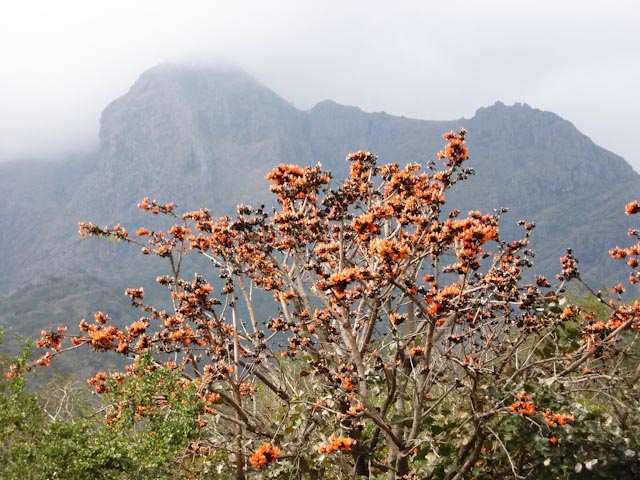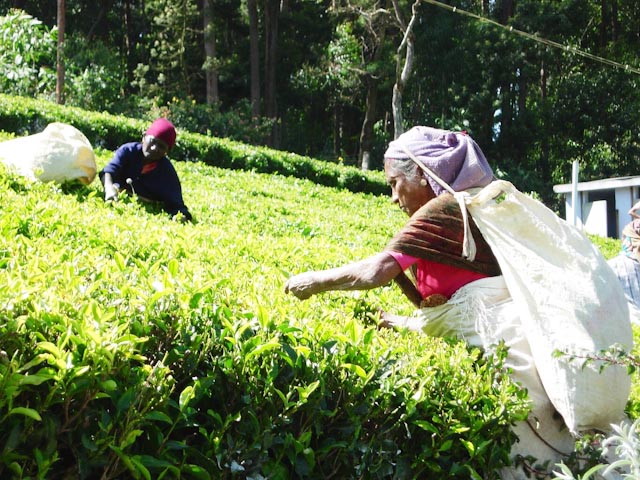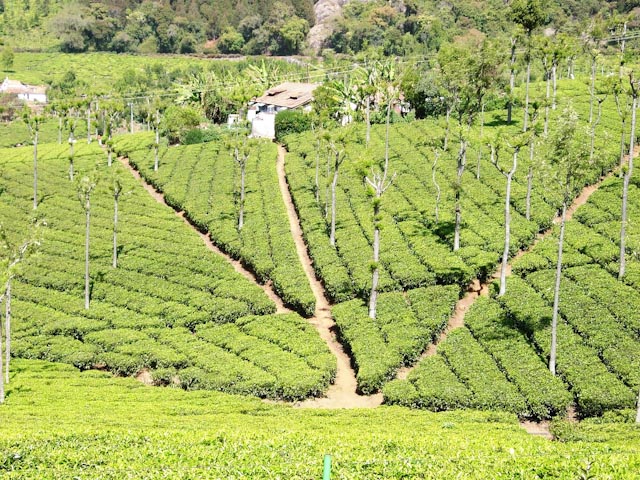The ragged blue Nilgiris loomed above us as we edged out of the Jungle Retreat’s driveway. Somewhere up there snuggled Snooty Ooty, ex-summer haven for Colonels and their ladies, the only thing saving them from the insanity of the lowland summer heat.
Climbing the edge of the Western Ghats took some time as we clung to each hairpin turn – 36 to be precise – as the yellow and black signs counted them down, or up, to be more accurate.
Dervla Murphy complained that Ooty’s past scenic charm had died at the hand of modern development and the overriding impression was that of nostalgia, noting signs pointing up steep pathways to ‘Col. and Mrs This’ and ‘Brig. And Mrs That’. Given that that was half a generation ago, Ooty has now lost even that small tinge of romance. The cliché ‘faded glory’ comes to mind, particularly when describing our accommodation.
The Ratan Tata Officers’ Holiday Home is a large house at the head of a windy drive through coniferous trees. There wasn’t a soul about. The British had evacuated and we were left with only one or two ancient retainers.
Inside we were met with long shiny wooden hallways and the furniture that was too big to carry off. Gaye and I found our room at the end of a gloomy corridor. Hardly any of the lights worked, so we squinted at each other through the dim romantic glow. The toilet was an antiquated chain-flush branded Niagra, although it didn’t live up to its title and it took about 15 pulls to coax any action. That night, before falling asleep, every toss and turn raised a puff of dust from the necessary layer of old blankets.
Out in the chill fresh air next morning, we were off to visit a tea plantation to investigate its inner workings. Loading into our cramped little mini bus, I clocked up head bang number seven. I swear India will give me brain damage. In Rajasthan, Rob and I would compare notes and see who was ahead (ho ho!) on bumps. Rob’s shaved pate bore the evidence of many a hard-to-judge raised temple threshold, and my eggs on my eggs were giving me extra height for the next bump.
Once at the tea plantation we could admire the orderly neatness of tea hedges that were interspersed with tall and slender silver oaks. The key reason for their presence being to halt soil erosion, as no hillside here is too steep for tea planting, it seems. The tea plants last for 70-100 years and when replaced, take three years to bear harvestable leaves.

Inside the factory, the ladies were trooping in with their full baskets on top of their heads and dumping their contents unceremoniously on the floor, where another lady scrambled around on the heaps of leaves, poking large handfuls down a hole in the floor.
Down some rickety steps our eyes followed the tealeaves into the shredder and out the other side onto a conveyor belt. Several heating, wetting and roasting processes later, we were holding the finished product of dark granules in our hands. This factory makes a soluble tea that I first encountered in the UK.
Out the other end of the process was the inevitable shop, and we were given tastings of their Marsala Tea and a chocolate-flavoured variety. The former was heavily laced with cardamom and deliciously fragrant; the latter, as gross as it might sound, was rich and full flavoured. Because I am an impulsive fool I bought one of each – some serious weight for the saddlebags – the smallest size being 500g. The others also bought some samples of Nilgiri Eucalyptus Oil, made from imported Australian trees.
Speaking of chocolate brings me to one of Ooty’s more redeeming features. Chocolate shops abound on every corner. I sampled some fig and honey as well as some Arabian date. Very fine!
That evening, for our last dinner together, we were going up-market to the Earl’s Court restaurant in the King’s Cliff Hotel. We were ushered in by waiters smartly dressed in black suits and bow ties, making our best efforts feel decidedly shabby. We gathered in the old smoking room in front of the fire while two young Indians incongruously crooned US hits from the ’70s. In the dining room amongst the heavy furniture, we had superb meals chosen from three available menus (Chinese, Western and Indian).
The next day we were up at 5am to attack a long grinding day of travel back to Kochi. After one hour of driving we were still queasily staring down into deep ravines, watching the steep descending profiles of the Nilgiris disappear into mist. Once in Coimbatore, we breakfasted on spicy dosais and coffee in metal cups and waited in the already unfamiliar heat for our public bus.
A bucket of sweat and five hours later we were back where we started in Kochi.
With time to kill the next day before my 11.30pm train to Mangalore, I queued up once again with every Raj, Ram and Sanjay for a ticket to Fort Kochi.
The ladies’ line was becoming a bit unruly and two American backpackers behind me were getting frustrated with the women squeezing in at the top of the line. One even attempted to instil some order. ‘Can you see there is a line here?’ she demanded.
As this appeal was only met with blank stares and the odd small smile, I turned around and remarked, ‘you will have to sharpen your elbows.’
‘They don’t seem to understand there’s a line,’ she complained.
I laughed. ‘Of course they see there’s a line. That’s why they’re jumping it. They’re not silly.’
The American looked pretty unimpressed with this perfectly logical explanation. She’ll learn, I thought, smiling, as I shifted my foot to a slightly more strategic position to block a determinedly aggressive old lady to my left. In any event I could just pass my money over their heads to the counter if they started jabbing me too hard.
This would be my fourth visit to the island and would also be my fourth attempt to see the inside of the Jewish Synagogue. Attempt One saw me there in the closed period between 12 and 3pm; Attempt Two saw me stupidly wearing a knee-revealing skirt (I was sidetracked by the heat) and was refused entry; Attempt Three saw it closed for Shabbat.
I chatted with a Mr Gupta and his son Nikil on holiday from UP on the voyage over. Mr Gupta was full of enthusiastic recommendations for shrines and temples for me to visit in Uttar Pradesh, and I didn’t have the heart to tell him I was not going that way again. Waving goodbye after many handshakes, I headed off toward Jewtown in search of clever wooden puzzle boxes, intriguing lockable bronze tika boxes, Saraswatis and Ganeshes.
I have now accepted that it is not my fate to see the inside of the Synagogue as it was also closed today, even though the sun had not set on this Friday at my time of arrival.
And my search for the perfect Saraswati continues. Wood will not get through Australian Customs and the smaller bronze figures have cramped ugly faces. The larger versions can be up to 3kg and are not to be lugged for two more weeks (one has to draw the line somewhere). Many others erroneously show the goddess with a swan, which is actually the vehicle of her partner Brahma, Saraswati’s vehicle being the peacock.
Frustrated in my search I once again looked to the Cafe de Bazaar’s amazing fish curry for consolation…and ooh, there may just be room for dessert...

Comments
Total Comments : ( ) You have to register to post a comment.
RECENT COMMENTS